Waterjets
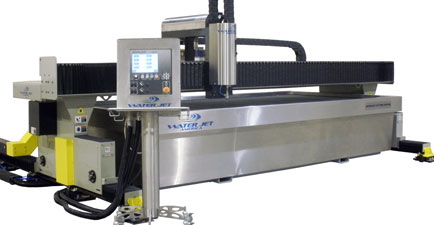
What is a Waterjet?
A Waterjet cutting system, is an industrial tool capable of cutting a wide variety of materials using a high-pressure pump. The water is then pumped out of a hydraulic pump through a very small orifice, where pressure meets resistance. Waterjets can achieve pressures over 90,000 psi (6200 bars).
There are two types of waterjets:
Abrasive Waterjets & Pure waterjets
Axsis Technologies specializes in both!
At Axsis Technologies we manufacture a range of different size tables.

SPECIFICATIONS |
||
| Standard Sizes | 6x10 (2m x 3m) | 6x12 (2m x 4m) |
| 8x13 (2.5m x 4m) | 12x20 (3.5m x 6m) | |
*Larger and smaller sizes available | ||
| Repeatability | 0.003 in | 0.05 mm |
| Maximum Speed | 1,000 ipm | 25,000 mm/min |
*Higher speeds available | ||
| Z Travel | 8 in | 200 mm |
*Larger clearances available | ||
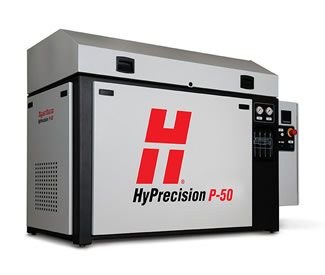
HyPrecision™ Waterjet Pumps
The most reliable and customer focused name in waterjets is now a member of the Hypertherm family of cutting solutions. AccuStream waterjet pumps are now Hypertherm HyPrecision™ waterjet pumps ranging in horsepower from 15 to 150.
Setting Hypertherm HyPrecision™ Waterjet Pumps apart from all others is the Advanced Intensifier Technology. AIT extends maintenance intervals, reduces maintenance time and maximizes performance. This unequalled combination makes Hypertherm HyPrecision™ Waterjet Pumps the most reliable waterjet pumps in the world.
Now introducing our new HyPrecision™ Predictive pumps incorporate patented Seal Maintenance Technology™ and service-friendly capabilities that substantially reduce maintenance costs and disruption caused by non-planned service. With standard features such as our proven Advanced Intensifier Technology™ and closed loop proportional pressure control, these latest generation waterjet systems offer you even more consistent cut quality while ensuring improved reliability and easy, straightforward service.
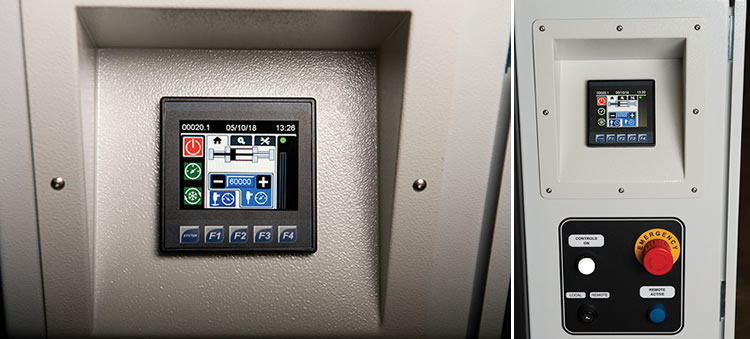
Click here for FAQs about our waterjet systems
Advantages:
Easier Servicing
The hydraulic rod seals and plunger bearings are readily accessed from the outside of the hydraulic end cap.
Longer Lasting
Hydraulic center section features an advanced piston design which minimizes seal wear and improves component life.
Streamlined Access
Check valve utilizes a screw-less, low pressure poppet design that enables quick evaluation of key contact surfaces. This feature also allows for noticeably faster component replacement.
Optimized Shifting
Advanced electronics provide smooth, reliable shifting for optimum cut quality. Shift times are even monitored to ensure optimal pump performance.
Simpler High Pressure Ends
Durable threaded-rod design simplifies high-pressure end removal for quick seal maintenance. Meanwhile the non-threaded cylinder design increases reliability.
Prolonged Seal Life
Large diameter ceramic plunger produces more water per stroke with reduced friction yielding maximum seal life
Waterjet advantages:
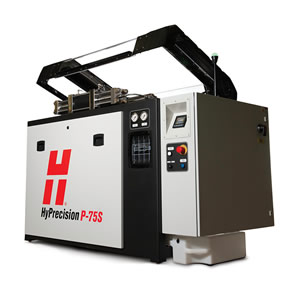 Waterjets vs. Lasers
Waterjets vs. Lasers
Laser cutting uses a laser focused onto the material intended to melt, burn and vaporize the material. The laser can be comprised of gas (such as CO2) or solid-state. The beam can be static, where the material progresses in front of the laser, or the laser can move across the material.Advantages of waterjets
- Cut more materials!
- Waterjets can cut reflective materials like copper and aluminum that lasers cannot.
- Waterjets can cut a wide range of material with no change in setup.
- Waterjets can cut heat sensitive materials that lasers will ruin.
- No heat-affected zone!
- Waterjet cutting does not heat your part. There is no thermal distortion, which can occur with lasers.
- Waterjets do not alter the properties of the material.
- Environmentally friendly, No noxious fumes, (vaporized metal) and no risk of fires.
- Material Uniformity not important!
- Lasers need the material to be relatively flat (uniform).
- When cutting over uneven surfaces, focus can be lost thus losing cutting power.
- Better tolerances on thicker parts
- Waterjets easily handle from 1/2" through 10".
- Lasers lose practicality at cutting thicknesses of 0.5"
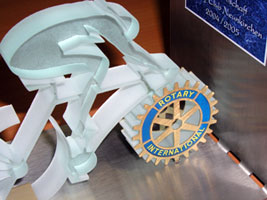
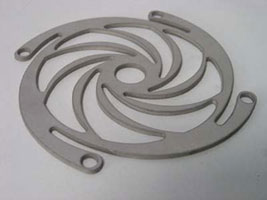
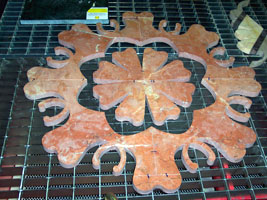
Waterjets vs. Electrical Discharge Machining (EDM)
EDM is when an electrical arc rapidly discharges between an electrode and the work-piece material. The series of arcs removes metal by melting it and vaporizing it, essentially eroding the metal using electricity.Advantages of waterjets
- Many parts that an EDM would do can be done faster and cheaper by Waterjet.
- Non-conductive materials that EDM cannot touch, such as glass, wood, plastic, and ceramic are a breeze for waterjet.
- Waterjets can pierce their own material that requires no additional fixturing. EDM needs a hole to be pierced.

Waterjets vs. CNC Milling
CNC Milling can perform a variety of operations on material such as cutting, drilling, lathing, and planning. However this usually requires several different tools. Advantage of Waterjet…One tool, all the work.Waterjets can machine brittle materials, pre-hardened materials, and difficult materials such as Titanium, Inconel, Stainless and Hardened Tool Steels that CNC Milling does not exceed in cutting.
Waterjets vs. Stamping / Punch Presses
A punch press uses a set of punches and dies to form parts out of metal. The metal is formed and cut by the punch press into a part, which may have secondary machining done to it or not. Coins are common parts that are formed using a punch press. The typical commercial punch press exerts about 20 tons of pressure.Did You Know?....
- Waterjets have a lower cost-per-piece for short runs than a die press, because of the expense (and time) involved in creating the dies and punches. Creating the drawing for a part on a waterjet machine is all that's needed to begin machining the part, where with a punch press, the drawing is usually only the first step to creating the die.



